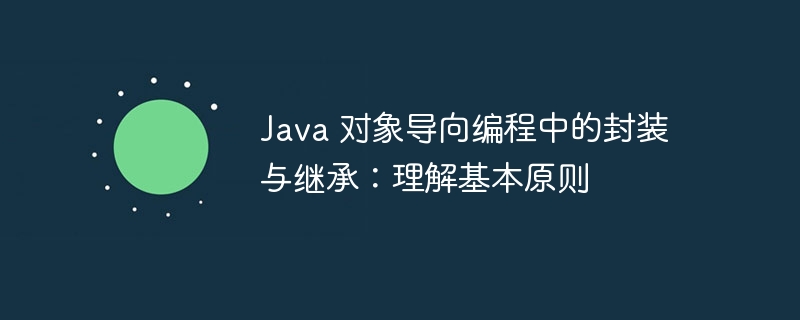

Encapsulation and inheritance in Java object-oriented programming are basic concepts in programming and are crucial to Java developers. In object-oriented programming, encapsulation and inheritance are two core concepts, and understanding them is crucial to building reliable and scalable code. Encapsulation helps us hide data and protect code, while inheritance allows us to reuse code and build hierarchies. This article will delve into the basic principles of encapsulation and inheritance in Java to help readers better understand and apply these two important concepts.
inherit
Inheritance is a mechanism in Object-oriented programming that allows one class (subclass) to inherit properties and methods from another class (parent class). Through inheritance, subclasses can reuse the existing functions of the parent class, thereby avoiding code duplication and improving development efficiency. In Java, inheritance is implemented through the extends keyword.
The relationship between encapsulation and inheritance
Encapsulation and inheritance are two important concepts in object-oriented programming, and they are closely related.
Advantages of encapsulation and inheritance
Disadvantages of encapsulation and inheritance
Best Practices
In order to take advantage of the advantages of encapsulation and inheritance and avoid their disadvantages, the following best practices should be followed when using them:
The above is the detailed content of Encapsulation and Inheritance in Java Object-Oriented Programming: Understanding the Basic Principles. For more information, please follow other related articles on the PHP Chinese website!
 What software is unity?
What software is unity?
 The difference between PD fast charging and general fast charging
The difference between PD fast charging and general fast charging
 How to use Java switch
How to use Java switch
 What should I do if chaturbate is stuck?
What should I do if chaturbate is stuck?
 Python crawler method to obtain data
Python crawler method to obtain data
 What does STO mean in blockchain?
What does STO mean in blockchain?
 InstantiationException exception solution
InstantiationException exception solution
 How to solve the problem when the computer CPU temperature is too high
How to solve the problem when the computer CPU temperature is too high




